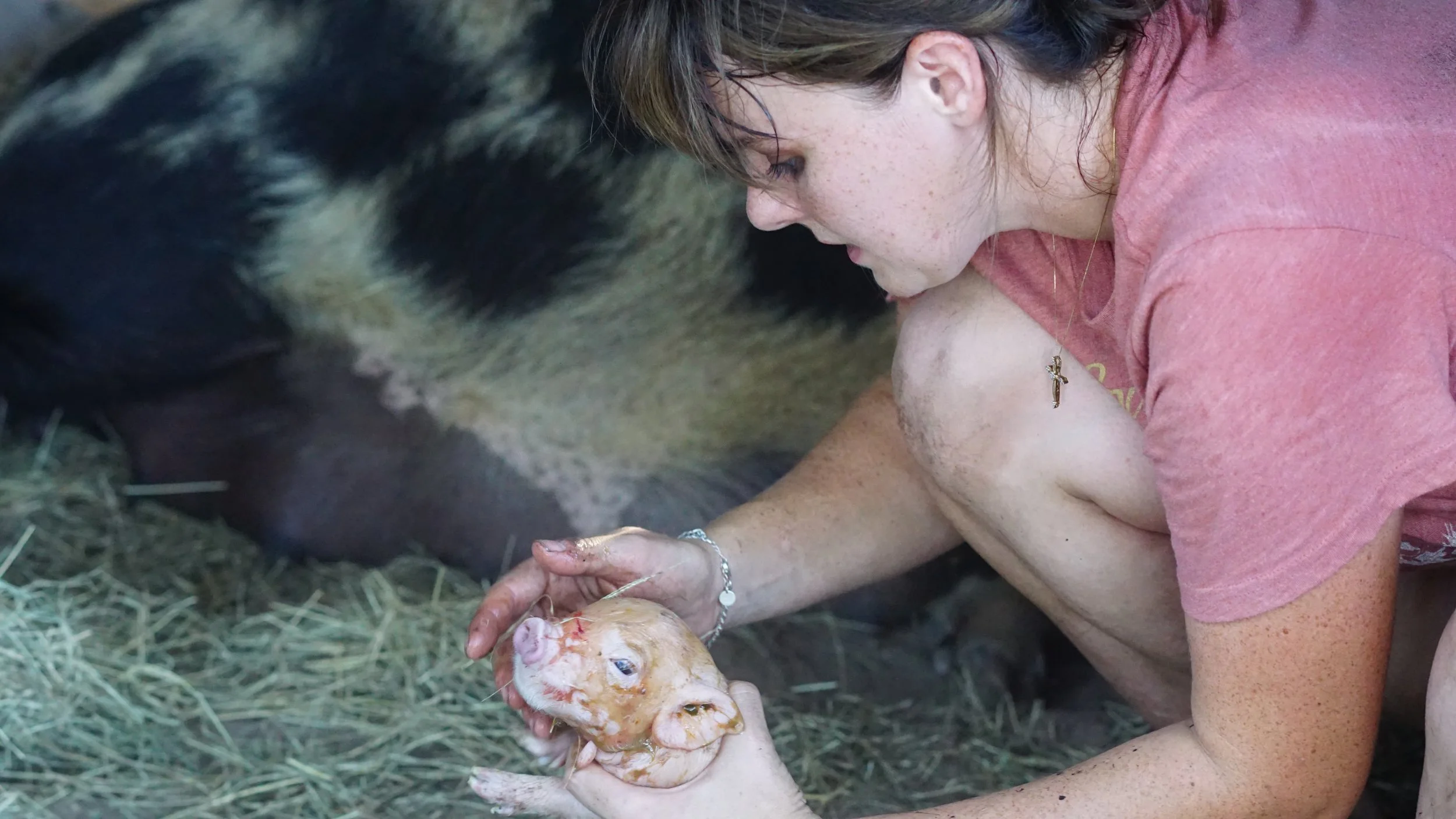Tips for a Successful KuneKune Farrowing
Farrowing Kunekune pigs is a rewarding yet delicate process that demands keen observation, proactive assistance, and meticulous record-keeping. Ensuring a smooth farrowing experience for your Kunekune sow requires you to understand their typical behaviors, coupled with a well-organized approach when show time comes.
One thing you’re going to want to do: monitor for signs of labor. Kunekune sows exhibit subtle changes in behavior as they approach labor. Pay close attention to signs such as restlessness, increased nesting activity, and a decrease in appetite. To get a better feel for when this is coming, sit with your pigs at feeding each day for an extra 10 minutes or so every now and then, and just see how they react. For us, we could tell labor was coming soon when one of our sows did not eat at feeding time, and she was moving hay all around her pen. Frequent observations of your sows during late-term pregnancy will help you anticipate the onset of farrowing and prepare accordingly.
When you have eaten and are satisfied, praise the Lord your God for the good land he has given you.
Deuteronomy 8:10
Another thing we didn’t realize would be so important: vigilant assistance. While Kunekune sows are generally proficient at farrowing, unforeseen complications can arise. Be prepared to step in when necessary. In some cases, Kunekune sows might need a helping hand during farrowing. If you notice a piglet is struggling to emerge, use clean hands (or latex-gloved hands, in our case) and gentle pressure to aid its passage. Carefully remove any amniotic membranes obstructing the piglet's airway and ensure it begins breathing. For us, this only happened for a few piglets. On the other hand, intervening too quickly can lead to stress, so always assess the situation before acting. When your sow has a piglet emerge, it is likely she’ll lay down as soon as it passes. If you don’t have a proper farrowing pen, this could lead to the piglet being crushed. For us, we had to do a lot of piglet moving during the farrowing of our two sows in order to keep them safe.
Last, but certainly not least - especially if you’re working with registered hogs, be thorough in your record-keeping. Maintaining meticulous records of each farrowing event is essential for the long-term health and success of your breeding program. Document important details such as dates, the number of piglets born, any interventions required, and the overall health of the sow and piglets. Keep track of coloration, the number of wattles per piglet, and the sex ratio of the litter. This information serves as a valuable reference for future breedings, enabling you to make informed decisions based on past experiences for a cull/keep analysis.
By focusing on vigilant monitoring of signs of labor, providing timely assistance, and maintaining detailed records, you can increase the likelihood of successful Kunekune pig farrowing. This approach not only promotes the well-being of your animals but also equips you with valuable insights for future farrowing events. Remember, each farrowing experience is a unique journey, and your attentive care plays a pivotal role in nurturing healthy, thriving Kunekune piglets.


